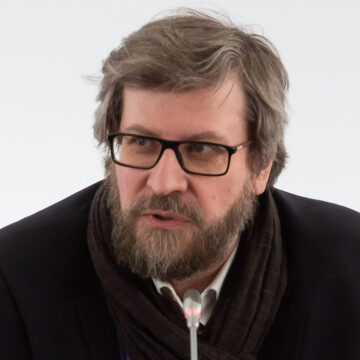The newly reopened issue of the Russian-Japanese territorial dispute over the Kuril Islands stems primarily from the two countries’ current domestic problems; but if we look at it through the prism of global processes triggered two decades ago by a geopolitical revolution in Europe and the collapse of the USSR, this conflict may also tell us something about the world at large.
National borders cannot stay fixed for long. The contours given to a country by every new peace treaty will inevitably be revisited following a change in the alignment of power and the erosion of the status quo. Subsequent upheavals will lead to a redistribution of influence and, consequently, to the emergence of other powers capable of guaranteeing the stability of interstate relations, including border security.
We still live within borders set by the Second World War and the postwar accords, which, by the mid-1960s, had achieved some sort of equilibrium in the global arena. The Yalta and Potsdam treaties, which divided spheres of influence within Europe, along with redefining the present status of the Kuril Islands, paved the way for restoring contemporary stability. The Suez crisis of 1956 triggered the emancipation of European colonies in Africa and Asia while the subsequent Cuban missile crisis of 1962 set limits on U.S.-Soviet nuclear deterrence.
These developments were followed by a period of relative stability, during which Moscow and Washington both had substantial leverage to control global processes, including ensuring the inviolability of national borders. It was only natural that in 1966, the idea emerged to consolidate the post-WWII alignment of power and officially delineate borders in Europe. The signing of the 1975 Helsinki Final Act transformed that idea into a reality.
The outcome of WWII led to the establishment of a bipolar world order, dominated by the Soviet Union and the United States, amidst the decline of Europe as a global player.
The collapse of the Soviet Union in the early 1990s unsettled the existing alignment of power, but did not really alter it. After the end of the Cold War, which was never formalized by any peace treaty, there was a sense that all power had come to be concentrated in U.S. hands. But with the advent of the 21st century, it became clear that the U.S. cannot rule the world single-handedly.
This lack of a fixed framework for national borders affects all aspects of international relations, and the two decades that followed the collapse of the Eastern bloc have seen many borders redrawn. A host of new states have since emerged, including fifteen post-Soviet and seven Yugoslav nations, the Czech Republic and Slovakia, Eritrea, East Timor, and Southern Sudan.
Several breakaway regions in the former Soviet Union have also proclaimed their independence, but have so far failed to gain international recognition (e.g., Nagorny Karabakh and Transdnestr) or have been recognized by only a handful of countries, as in Abkhazia and South Ossetia’s case.
There are other countries that have now come very close to disintegration and may soon collapse, either peacefully (Belgium) or not so peacefully (Iraq). The situation in the volatile Middle Eastern region is aggravated by the current waves of anti-government protests, which have previously led to the overthrow of old regimes.
Border mobility became all the more apparent in the late 2000s, when the administrative boundaries of some former federative states were reconfigured.
Until 2008, boundaries within the former Yugoslavia and the now defunct Soviet Union were seen as inviolable, but the situation changed with proclamations of sovereignty by Kosovo, South Ossetia, and Abkhazia.
The conflict over the breakaway region of Nagorny Karabakh will be impossible to resolve unless Azerbaijan’s current borders are reshaped.
In Moldova, political leaders of the younger generation have no interest in restoring their country’s territorial integrity according to its Soviet contours. They would rather become part of the European Union, while the unresolved Transdnestr conflict prohibits their integration.
In Asia, U.S.-Soviet confrontation also ensured the inviolability of national borders, although its influence was somewhat weaker there than in Europe because the logic of relations between Asian powers, such as China and India, and India and Pakistan, has always been different.
The Cold War’s anesthetic effect still lingers on in East Asia, where the world’s two superpowers once called the shots, with China constantly vacillating in its allegiances.
Japanese Foreign Minister Seiji Maehara is right in saying that the post-WWII period is not yet over when it comes to the relations between Tokyo and Moscow.
But this is just part of the truth. The legacy of the Second World War still largely defines the geopolitics of the entire East Asian region. All of its most striking controversies – the division of the Korean Peninsula into the North and the South, the disputed Kuril Islands, and China’s treatment of
Taiwan as a renegade province – are consequences of WWII conflicts that remain unresolved to this day. The end of the Cold War, contrary to expectations, has offered no quick fix.
Asia will become a major center of power in the 21st century, owing largely to China and its rapidly growing influence on regional and global developments.
It has a major role to play in defining the alignment of power in the decades ahead, and its policies will be a crucial factor in how post-WWII conflicts develop in the 21st century.
Growing tensions in East Asia, due primarily to U.S.-Chinese rivalry, may also aggravate some interstate disputes, as has been the case with the two Koreas.
In this context, Moscow’s decision in the early 2000s to make concessions in its territorial dispute with Beijing was a step in the right direction because the price to pay in ten or fifteen years’ time would have been much higher.
The late 1980s and early 90s saw a historic experiment in establishing a new world order without resorting to warfare. This process is not yet over, and we should brace ourselves for the twists and turns ahead.










